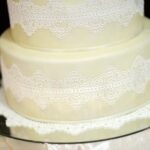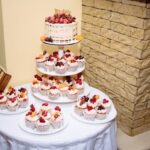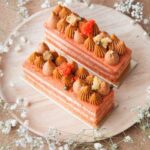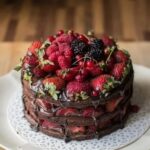Are you wondering how to decorate an Easter cake that will dazzle your family and friends this upcoming holiday? Easter is a time of celebration and tradition, and one way to add to the festive atmosphere is by creating a beautifully decorated cake. In this article, we will explore the significance of Easter and the tradition of decorating cakes for the holiday, as well as provide essential tips and techniques for creating a stunning Easter centerpiece.
Easter is a meaningful period for many people, symbolizing renewal and new beginnings. One beloved tradition during this time is the decoration of Easter cakes. Whether it’s a reflection of religious beliefs or simply a fun celebration of springtime, decorating an Easter cake can bring joy to those partaking in the festivities. A beautifully adorned cake can add elegance and charm to any Easter gathering, making it not only a delicious dessert but also a visually stunning centerpiece.
The act of decorating an Easter cake can be a creative expression that reflects the spirit of the holiday. It allows individuals to showcase their artistic talents while also celebrating traditions in a contemporary way.
The process allows for personalization tailored specifically to individual tastes and preferences, making it possible to create unique and one-of-a-kind designs that capture the essence of Easter. So if you’re ready to embark on this delightful journey of cake decoration, read on as we guide you through every step.
Essential Tools and Ingredients for Decorating an Easter Cake
When it comes to decorating an Easter cake, having the right tools and ingredients is essential for creating a beautiful and festive dessert. Here is a comprehensive list of items you will need to create a stunning Easter cake:
- Piping bags and tips: These are essential for creating intricate designs and patterns with frosting or icing.
- Food coloring: To add vibrant colors to your cake decorations, food coloring in gel or liquid form is necessary.
- Fondant: This versatile sugar paste can be shaped and molded into various decorations for your Easter cake, such as flowers, eggs, or even bunnies.
- Edible decorations: Sprinkles, edible glitter, and candy pearls are just a few examples of decorative elements that can add extra flair to your cake.
While these are some of the basic tools and ingredients needed for decorating an Easter cake, there are many other items that can enhance the creative process. If you cannot find some of these items at your local grocery store or baking supply shop, there are also excellent online retailers where you can purchase them.
Alternatively, if certain ingredients like fondant are not available or difficult to work with, marzipan can be used as a suitable substitute for creating edible decorations. For those who prefer natural food coloring options, vegetable-based dyes can be used instead of traditional food coloring. Ultimately, creativity and resourcefulness in ingredient selection can lead to unique and equally stunning results when decorating an Easter cake.
In addition to having the right tools and ingredients on hand for decorating an Easter cake, it’s also crucial to have a well-prepared cake base. Before diving into the decoration process, make sure that your cake is properly prepared by leveling its layers, filling it with delicious frosting or fillings (if desired), and crumb-coating it before applying the final layer of frosting.
By taking the time to prepare your cake properly from start to finish, you’ll ensure that your decorations have a perfect canvas on which to shine.
Preparing the Cake for Decoration
Once you have chosen the perfect cake for your Easter celebration, it’s time to prepare it for decoration. Properly preparing the cake is essential to ensure a smooth and successful decorating process. To start, you’ll need to level the cake layers to create an even surface for decorating. Using a serrated knife or cake leveler, carefully trim off any domed tops to create a flat, even layer.
Next, it’s important to fill the cake with your desired filling. Whether it’s fruit preserves, flavored buttercream, or chocolate ganache, adding a delicious filling between the cake layers adds both flavor and moisture to the finished product. Use a piping bag or offset spatula to apply an even layer of filling on top of each cake layer before stacking them.
After filling the cake, it’s time to crumb-coat it with a thin layer of frosting to seal in any loose crumbs and create a smooth surface for decorating. This step is especially important if you are working with a light-colored frosting that may show crumbs. Once the crumb coat has set in the refrigerator, you can then apply your final layer of frosting or fondant for decorating.
Choosing the right type of cake is also crucial for successful decoration. A sturdy but moist cake such as vanilla or chocolate is often recommended for elaborate decorations since they hold up well under fondant and intricate designs. However, if you prefer a lighter textured cake like sponge cake or chiffon, make sure to adjust your decoration techniques accordingly to prevent structural issues.
By carefully following these steps and tips on preparing your Easter cake for decoration, you’ll be setting yourself up for beautiful results when it comes time to add all those festive flourishes and decorative touches that will delight your guests.
Basic Cake Decorating Techniques
Decorating a cake for Easter can be a fun and creative way to add a special touch to your holiday celebration. Whether you’re a beginner or an experienced baker, there are several basic cake decorating techniques that you can use to create a festive Easter cake.
One essential tool for basic cake decorating is the piping bag. Piping bags come in different sizes and can be used to apply frosting in various patterns and designs. In addition to the piping bag, other essential tools include different types of icing tips for creating different shapes and textures on the cake, as well as food coloring for adding vibrant colors to your designs.
When it comes to basic decorating techniques, smooth and even frosting is key. Start by applying a thin layer of frosting, known as a crumb coat, to seal in any crumbs before adding the final layer of frosting. Use an offset spatula to spread the frosting evenly over the cake’s surface, and then use a bench scraper to create a smooth finish.
Creating edible decorations is another basic technique that can enhance the look of your Easter cake. Using fondant or gum paste, you can mold shapes such as flowers, leaves, or small animals to adorn your cake. These decorations can also be painted with edible food coloring for added detail.
Incorporating these basic decorating techniques into your Easter cake design will help you create a beautiful and festive centerpiece for your holiday table. Whether you choose traditional Easter motifs or more unique designs, decorating a cake for Easter is an enjoyable way to express your creativity and celebrate the holiday with friends and family.
| Decorating Tools | Frosting Techniques |
|---|---|
| Piping bag | Crumb coating |
| Icing tips | Smooth frosting application |
| Food coloring | Create patterns with icing tips |
Easter Cake Design Ideas
When it comes to decorating an Easter cake, the possibilities are endless. With a little creativity and some basic cake decorating skills, you can create a stunning centerpiece for your Easter celebration that is both delicious and visually appealing. This section will provide you with some creative and festive design ideas for Easter cakes, including traditional themes such as Easter eggs, bunnies, chicks, and spring flowers.
Traditional Easter Themes
One of the most popular ways to decorate an Easter cake is to incorporate traditional symbols of the holiday. You can use pastel-colored fondant or frosting to create delicate spring flowers like daisies or tulips.
Another classic option is to decorate the cake with edible Easter eggs, either by using real chocolate eggs or by making them out of fondant. Bunnies and chicks are also adorable additions to an Easter cake, and they can be crafted from fondant or piped with buttercream.
Creative Cake Shapes and Sizes
Beyond traditional designs, you can get creative with the shape and size of your Easter cake. Consider baking the cake in the shape of a giant egg or a bunny silhouette for a fun twist on tradition. You can also make several smaller cakes in different shapes and sizes to create a charming display that represents a springtime garden. Experimenting with different sizes and shapes adds an element of surprise and delight when it comes time to serve the cake.
Color Schemes for Easter Cakes
Choosing the right color scheme for your Easter cake is essential in creating a festive atmosphere. Pastel colors such as pink, yellow, green, and lavender are typical choices for Easter decorations. Consider incorporating these colors into your frosting, fondant decorations, or even using natural food coloring options from fruits or vegetables for a more organic approach. Harmonizing your color scheme with the overall theme of your celebration will help tie everything together beautifully.
There are countless ways to decorate an Easter cake, so don’t be afraid to let your imagination run wild when coming up with design ideas that reflect the joy and renewal associated with this special holiday. With these suggestions in mind, you’ll be well-equipped to create a visually stunning masterpiece that will impress all your guests at this year’s Easter gathering.
Advanced Cake Decorating Techniques
Once you have mastered the basics of cake decorating, you may want to explore more advanced techniques to take your Easter cake to the next level. These techniques require practice and patience, but the results can be truly impressive. Here are some advanced cake decorating techniques to consider:
- Sculpting: Sculpting a cake involves shaping and carving the cake into specific shapes or figures. This technique is often used for creating three-dimensional designs such as animals, characters, or objects.
- Airbrushing: Airbrushing allows you to add smooth gradients of color to your cake, creating stunning visual effects. This technique can be used to add depth and dimension to your Easter cake design.
- Using Edible Paints: Edible paints can be used to create intricate designs and details on a cake. This technique allows for greater artistic freedom and precision in decorating your Easter cake.
If you are eager to learn advanced cake decorating techniques, there are resources available both online and in-person where you can expand your skills. Online tutorials, workshops, and classes offered by experienced pastry chefs can help you gain proficiency in these more complex methods.
Remember that mastering these techniques takes time and dedication, so don’t be discouraged if your first attempts aren’t perfect. With practice and perseverance, you’ll be able to create visually stunning Easter cakes that will impress everyone at your holiday celebration.
Troubleshooting Common Decorating Challenges
Preventing Common Decorating Challenges
To prevent common decorating challenges when decorating an Easter cake, there are a few tips and tricks to keep in mind. One of the most important things is to ensure that your cake is completely cooled before attempting any sort of decoration.
Warm or hot cakes can cause frosting to melt and slide off, resulting in a messy and uneven finish. Additionally, using a crumb coat before applying the final layer of frosting can help prevent crumbs from ruining the appearance of your cake.
Solutions to Common Problems
If you encounter issues such as cracking fondant, melting buttercream, or piping errors while decorating your Easter cake, it’s important not to panic. For cracked fondant, try smoothing out the cracks with clean fingers or a fondant smoother. A small amount of vegetable shortening can also help repair minor cracks by acting as a type of “glue” for the fondant.
When dealing with melting buttercream, consider placing the cake in the refrigerator for a short period to allow the buttercream to firm up before continuing with the decoration process. As for piping errors, gently scrape away the mistake using a small spatula or knife and carefully re-pipe over that area.
Saving an Imperfect Cake
In the event that your Easter cake doesn’t turn out exactly as planned, don’t fret – there are ways to salvage it. If your frosting isn’t perfectly smooth, consider adding extra decorations or incorporating textured elements such as edible flowers or sprinkles to distract from any imperfections.
If you’ve accidentally torn the fondant or made an error with your piped design, strategically placed edible decorations such as sugar flowers or Easter-themed figurines can help cover up any mistakes and add charm to your cake. Remember that imperfections can add character and uniqueness to your creation.
Adding Personal Touches to Your Easter Cake
When it comes to decorating an Easter cake, adding personal touches can make the cake even more special and meaningful. There are various ways to incorporate personalization into the cake design, from using family recipes to personalized cake toppers or incorporating meaningful decorations.
One way to add a personal touch to your Easter cake is by using a family recipe that has been passed down through generations. Whether it’s a special type of cake or a unique frosting recipe, using a family tradition in your Easter cake can bring warmth and nostalgia to the celebration. Not only does this honor family heritage, but it also creates a sense of tradition and connection during the holiday.
Another way to personalize your Easter cake is by creating or using customized cake toppers. Whether it’s a monogram of the family’s last name, mini replicas of favorite Easter decorations, or even edible family photos, personalized cake toppers can add a unique and memorable element to the dessert. These custom elements are not only eye-catching but also serve as conversation starters during the festivities.
Moreover, thoughtful and meaningful decorations can be incorporated into the design of the Easter cake. For example, if certain flowers hold sentimental value for your family or if there are specific colors that represent cherished memories, these can be integrated into the decoration. Additionally, consider incorporating symbols that have special meaning within your household – whether they’re religious or simply reflect shared interests among loved ones.
| Personalization Ideas | Description |
|---|---|
| Family Recipes | Using traditional family recipes for cakes and frostings |
| Customized Cake Toppers | Using monograms, themed decorations or edible images as cake toppers |
| Meaningful Decorations | Incorporating symbols & themes with sentimental value such as flowers or colors relevant to loved ones |
By infusing these personal elements into the design and flavor of your Easter cake, you transform it from just another dessert into a centerpiece that truly celebrates your loved ones’ history and traditions. Ensure that when you display your beautiful creation at your holiday gathering; share with others what made each element so important during one of life’s most treasured days – especially for those who will take part in tasting its success.
Conclusion
Decorating an Easter cake is not just about creating a beautiful dessert; it’s also about adding to the joy and festivity of the holiday celebration. A beautifully decorated cake can become the centerpiece of your Easter gathering, impressing your guests and adding a touch of creativity and personalization to the event. By following the essential steps outlined in this article, you can learn how to decorate an Easter cake that not only looks stunning but also tastes delicious.
From preparing the cake for decorating to mastering basic and advanced decorating techniques, there are numerous ways to express your creativity and showcase your skills in cake decoration. Whether you choose a traditional Easter theme with eggs, bunnies, and chicks or opt for a more personalized design, there are countless possibilities for making your Easter cake truly special.
As you share your beautifully decorated Easter cake with loved ones during the holiday, you’ll be spreading joy and delight with each slice. Encourage others to try their hand at decorating cakes as well, as it can be a fun and rewarding activity for anyone who loves baking and crafting.
Remember that the most important aspect of sharing your Easter cake is the love and care that goes into its creation, making it a true symbol of the spirit of Easter. So go ahead, unleash your creativity, and create a masterpiece that will be cherished by all.
Frequently Asked Questions
How Do You Shape a Cake Like an Easter Egg?
To shape a cake like an Easter egg, you can use a special egg-shaped cake pan or simply cut and mold a round cake into an egg shape using a knife and some creativity. Once the cake is shaped, you can frost it with pastel-colored icing and add festive decorations like sprinkles or candy eggs.
How Do You Make a Plain Cake Look Fancy?
Making a plain cake look fancy is easy with some simple tricks. You can start by adding fresh fruit or edible flowers as a colorful and elegant topping.
Using decorative stencils with powdered sugar or cocoa powder can also create a beautiful design on top of the cake. Additionally, adding layers of frosting in different colors or textures will give the cake a more sophisticated look.
How to Decorate an Easter Basket Cake?
Decorating an Easter basket cake can be a fun and creative process. Start by frosting the cake in grass green icing to resemble the basket’s grass lining, then use candy and icing to create mini eggs, bunnies, and chicks as decorations for the “basket.”
Finally, add pretzel sticks around the sides of the cake to mimic the basket’s handle for a festive finishing touch.

Welcome to my blog about home and family. This blog is a place where I will share my thoughts, ideas, and experiences related to these important topics. I am a stay-at-home mom with two young children. I hope you enjoy reading it! and may find some helpful tips and ideas that will make your home and family life even better!





